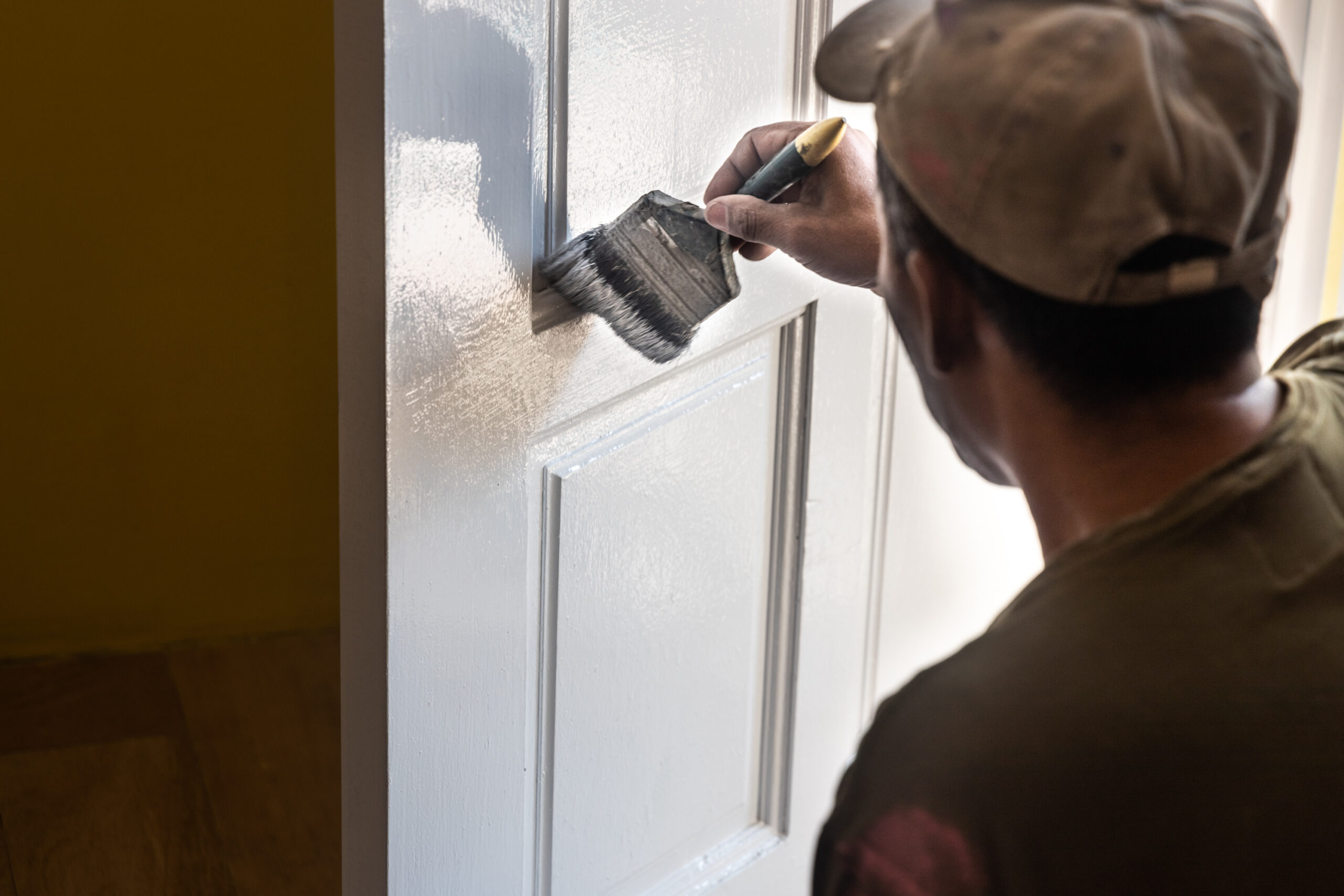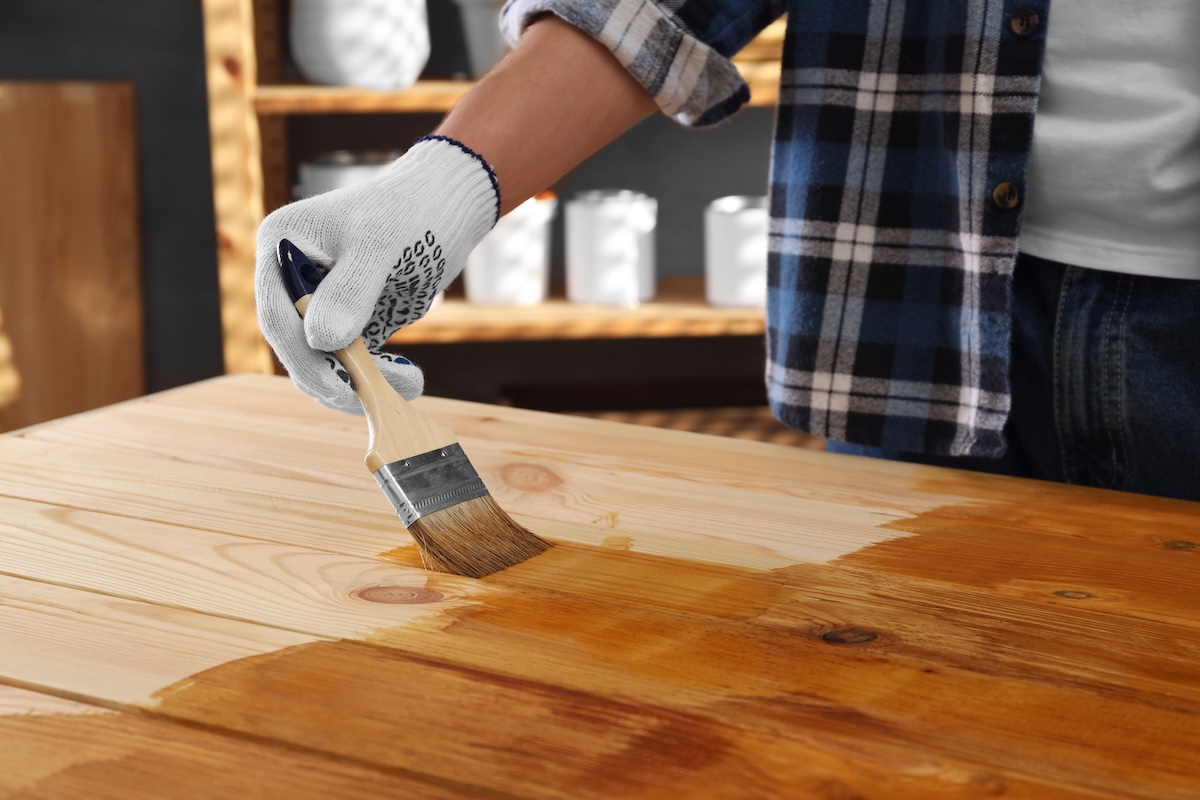Finishing is one of the most important steps in creating custom interior doors. From the color on the surface to the texture of the wood beneath, the right finish can completely change how a room looks and feels. Two common ways to finish a door are painting and staining. Each option offers its own advantages in style, durability and maintenance, shaping both the look and long-term performance of your doors.
In this guide, we’ll explore the benefits of painted and stained interior doors, the materials that work best for each and how to choose the right option for your home or project.
Find The Perfect Door For Your Home

Understanding Painted Interior Doors
Painted doors are a popular choice for homeowners who want a clean, uniform look that complements almost any design style, from modern to coastal or craftsman-inspired spaces. Because paint offers limitless color options, it’s easy to match your doors with surrounding trim, cabinetry or wall tones for a cohesive interior finish.
Best Material Pairings
Paint performs best on smooth surfaces like MDF or primed wood, which allow for even coverage and crisp lines without emphasizing wood grain. These materials are stable and resist minor expansion or contraction, making them ideal for Florida’s humid climate. For a long-lasting finish, doors should be sanded, primed and painted with high-quality enamel or latex paint, depending on the desired sheen. A light sanding between coats can help achieve a flawless, furniture-grade surface.
Maintenance & Durability
Painted doors are simpler to maintain. Minor scuffs and scratches can usually be touched up with a small amount of paint, and the smooth surface helps hide minor imperfections. However, in high-traffic areas, paint may show wear sooner than stain, particularly around handles and edges. Choosing a high-quality paint and applying a durable topcoat can help extend the finish’s life while keeping doors looking new for years to come.

Understanding Stained Interior Doors
Stained interior doors celebrate the natural beauty of real wood. Rather than covering the surface, stain enhances the grain, color variation and texture that make each door unique. This finish adds warmth and character, making it a perfect fit for craftsman, traditional, rustic or farmhouse-style interiors where natural detail is part of the appeal.
Material Considerations
Stain works best on solid wood or wood veneer doors, where the grain can show through clearly. Hardwoods such as oak, maple and mahogany take stain exceptionally well, creating depth and richness that paint can’t replicate. The density and grain pattern of the wood affect how the stain absorbs. Lighter woods produce softer tones, while darker species achieve a more dramatic look. For a consistent finish, staining should be done on smooth, properly sanded surfaces and sealed with a clear protective coat.
Maintenance & Durability
Because stain penetrates into the wood rather than sitting on top, stained doors tend to hide small scratches and dents more effectively than painted ones. They also age gracefully, developing a patina, which is the natural darkening and soft sheen that wood gains over time from light exposure and use. To keep the finish looking its best, doors may need to be restained or resealed every few years, especially in high-traffic areas or humid environments. Regular dusting and occasional polishing help preserve the depth and sheen of the wood grain.
Key Factors When Choosing Between Paint and Stain
Both finishes can completely transform a room’s look and feel, but the right choice depends on your home’s style, lighting and maintenance preferences. Here are a few considerations to help you decide which option best fits your space.
Design Style
Painted doors work beautifully in modern interiors where clean lines and consistency matter. Stained doors, on the other hand, suit traditional, craftsman or rustic styles that emphasize natural texture and warmth.
Lighting
Painted finishes reflect more light, which helps brighten smaller or darker spaces. Stained finishes absorb light, creating a richer, cozier atmosphere — ideal for rooms where you want a sense of depth and character.
Maintenance Preferences
Painted doors are easy to touch up with a fresh coat when scuffs appear. Stained doors require less frequent maintenance overall, but may need occasional re-sealing to preserve color and protection, especially in humid or high-traffic environments.
Consistency vs. Character
If you prefer a smooth, uniform appearance across every room, painted doors offer total color control. For those who appreciate natural variation and grain detail, stained wood provides a one-of-a-kind look that can’t be duplicated.
Find the Right Finish for Your Door With 1st Choice Door & Millwork
Whether you prefer the sleek consistency of a painted finish or the warmth and character of stained wood, the right choice comes down to how you want your space to look and feel. Both finishes offer lasting beauty when paired with quality craftsmanship and proper materials.
At 1st Choice Door & Millwork, we help homeowners, builders and designers create interiors that balance form and function. Our selection of custom interior doors can be finished to match any style, from modern minimalism to timeless natural wood.
Ready to start your custom door project? Contact us today to find the perfect interior doors for your home or next build.

